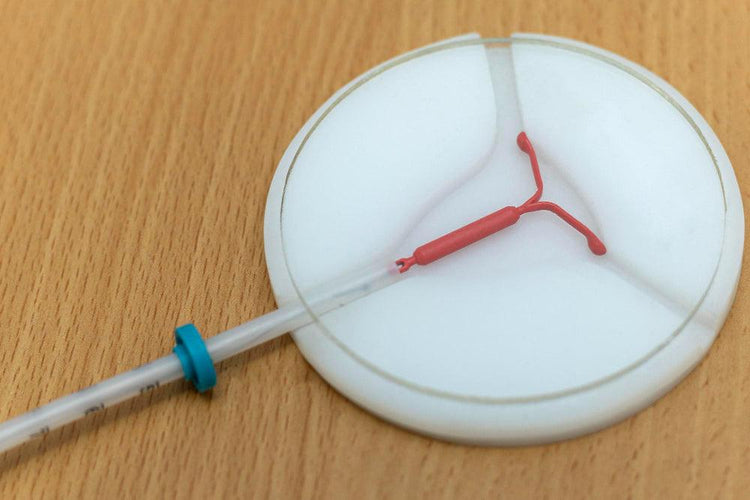
 Instagram
Instagram
How to change contraceptive pill? - Full Guide

Related products
Need to Switch Contraceptive Pills
Contraceptive pill usage in the UK is widespread, and it's vital to understand the need for possibly changing brands. "No two individuals' hormonal compositions are the same, and thus, one contraceptive pill cannot be the perfect fit for all", as Dr. Sarah Hill articulates. So, some women might need to change their contraceptive pill brand due to side effects, changing health conditions, lifestyle alterations or the pill's inefficacy. Ultimately, the goal is to find a contraceptive pill that provides the desired protection without negatively impacting the user's quality of life.
Highlighting the Importance of Understanding the Correct Procedure to Switch Contraceptive Pills
Equally important to knowing when to change your contraceptive pill is understanding how to do so correctly. Making a switch involves more than just starting a new brand—it's about timing, managing potential side effects, and maintaining contraceptive protection throughout the process. "Switching contraceptive pill brands should always be done under the guidance of a healthcare provider to ensure the transition is smooth and safe," asserts Dr. Laura from NHS.

Why Change Your Contraceptive Pill?
List of Potential Reasons for Changing Contraceptive Pills
Women might decide to change their contraceptive pill for a variety of reasons. For instance, the pill may not be effectively controlling the menstrual symptoms, or it might be causing undesired side effects such as mood swings or weight gain. Changes in lifestyle, such as starting to smoke or changes in weight, might also require a pill change. Furthermore, changes in health status, like being diagnosed with certain medical conditions, could necessitate a change. "The most effective contraceptive pill is the one that fits best with the individual's unique circumstances," notes Dr. Paula Briggs, a consultant in sexual and reproductive health in the UK.
Discussion of Common Side Effects or Issues That May Necessitate a Change
Some common side effects might prompt a switch in the contraceptive pill brand. According to British Medical Journal, side effects such as nausea, breast tenderness, and mood changes are common in the first few months of starting a new pill. If these persist beyond three months or become intolerable, a brand change might be required. Furthermore, the pill might fail to control menstrual symptoms or might even exacerbate them. "Listening to one's body and monitoring any changes post starting the pill is critical to identify if a change is needed," comments Dr. Zara Haider.
When to Consider Changing Your Pill
Timing Considerations for Changing Contraceptive Pills
Timing is a crucial factor when considering changing contraceptive pills. It's best to give the body at least three months to adjust to a new pill before deciding whether it's suitable, advises Dr. Sarah Hardman. Changes should ideally be made between pill packs to avoid disrupting the cycle and maintaining contraceptive protection. Lastly, changes should always be discussed with a healthcare provider to determine the best timing.
Consultation with a Healthcare Provider
Consulting with a healthcare provider is paramount when considering changing your contraceptive pill. They can provide advice based on a thorough understanding of your health history, current health status, and lifestyle considerations. Furthermore, they can guide you through the process and manage any potential risks. "A healthcare provider can help navigate the myriad options available and select the best contraceptive pill that balances benefits and side effects," advises Dr. Anne Connolly.
Choosing a New Contraceptive Pill
Factors to Consider When Selecting a New Contraceptive Pill
Choosing a new contraceptive pill involves considering various factors. These include potential side effects, the pill's effectiveness, personal health history, lifestyle factors, and specific benefits beyond contraception such as acne control or menstrual regulation. "The best approach is to have a detailed discussion with your healthcare provider who can guide you on the most suitable options based on your individual circumstances", recommends Dr. Diana Mansour.
Role of Healthcare Provider in Suggesting New Options
The role of a healthcare provider in suggesting new contraceptive options is invaluable. They can consider the nuances of each brand, understanding the subtle differences in hormonal compositions, and how these might interact with an individual's specific health status and needs. "Choosing a contraceptive pill isn't a one-size-fits-all decision. It requires understanding the individual's body, their health, and their lifestyle. This is where healthcare providers play a critical role," comments Dr. Marta Janczukowicz.
Procedure for Changing Contraceptive Pill
Detailed step-by-step procedure for changing contraceptive pills
When changing your contraceptive pill, the first step should always involve a consultation with your healthcare provider. According to NHS guidelines, abrupt discontinuation or swapping of pills without professional advice might lead to unexpected pregnancies or hormonal imbalances. After discussing with your doctor, they will guide you on when and how to begin the new contraceptive pill. The timing and method can depend on your current pill type, but it's often recommended to finish your current pack before starting a new one.
Following your doctor's advice is key to avoiding issues such as breakthrough bleeding or other side effects. "Understanding the correct procedure and following it meticulously can significantly reduce complications and ensure seamless contraception" explains Dr. Julia Palmer.
Variations in the procedure depending on types of contraceptive pills
There may be variations in the changing procedure depending on the type of contraceptive pill you're shifting from and to. This is why it's essential to consult with your healthcare provider before making any changes. For instance, moving from a combination pill (oestrogen and progestin) to a progestin-only pill may require different steps compared to transitioning between two different combination pills.
"Each type of pill has a unique hormonal makeup, which necessitates a distinct switching procedure. Following the proper method can ensure continuous contraceptive coverage and prevent any adverse health outcomes" affirms Dr. Sarah Matthews.
Side Effects and Risks Associated with Changing Contraceptive Pill
Common side effects and risks associated with changing contraceptive pills
Changing your contraceptive pill can have side effects, particularly during the first few months as your body adjusts to the new hormone levels. According to The Faculty of Sexual and Reproductive Healthcare, some common side effects can include spotting or breakthrough bleeding, mood changes, nausea, breast tenderness, and changes in menstrual flow. Although these side effects are usually temporary, they can be distressing.
"The body can take time to adapt to new hormonal levels after a pill change, leading to possible temporary side effects. However, persistent or severe symptoms should prompt an immediate consultation with a healthcare provider", highlights by Dr. Patricia Geraghty.
Managing potential side effects and when to seek medical attention
Effective management of side effects after changing contraceptive pills includes tracking any changes in your body and discussing them with your healthcare provider. Using a symptom diary can be a useful tool for monitoring changes and identifying patterns. If symptoms persist for several cycles or if severe side effects occur such as heavy bleeding, severe abdominal pain, or significant mood changes, it's crucial to seek medical attention immediately.
"Keeping an open line of communication with your healthcare provider is critical in managing potential side effects and ensuring a smooth transition between contraceptive pills", says Dr. Laura Edwards.
What to Expect After Changing Your Contraceptive Pill
Physiological changes and symptoms to expect after changing contraceptive pills
After changing your contraceptive pill, it's normal to experience some physiological changes as your body adjusts to the new hormonal balance. Changes in menstruation, mood, and physical symptoms such as breast tenderness or nausea are common. As per British Pregnancy Advisory Service, these symptoms typically subside after a few months once your body gets accustomed to the new contraceptive pill.
"Awareness of the possible physiological changes after changing contraceptive pills helps in better management and leads to a seamless transition", according to Dr. Zoe Williams.
Importance of adherence to the new contraceptive pill schedule
Adherence to the new contraceptive pill schedule is crucial for ensuring effective contraception and minimising side effects. Missing doses can disrupt the hormone balance, increase the risk of pregnancy, and exacerbate side effects. It's beneficial to incorporate the pill into your daily routine to avoid forgetting it, as advised by the Family Planning Association.
"Strict adherence to the pill schedule not only ensures effective contraception but also aids in faster adaptation of the body to the new pill", explains Dr. Julie Barnes.
Conclusion
Recap of the main points discussed in the article
In conclusion, changing contraceptive pills involves a series of steps, beginning with a consultation with a healthcare provider. The process may vary depending on the type of contraceptive pill involved. While changing pills can lead to temporary side effects, most of these can be effectively managed with proper communication with your healthcare provider. Furthermore, awareness of the physiological changes post-change and strict adherence to the new pill schedule can ensure a smooth transition.
Final thoughts on changing contraceptive pills safely and effectively
Changing contraceptive pills should not be taken lightly, and it should always be done under the guidance of a healthcare provider. Understanding the potential risks, side effects, and steps involved in the process is crucial for making an informed decision. Following the new pill schedule and communicating with your healthcare provider can lead to an effective and safe transition.
Encouragement for readers to consult with their healthcare provider for a safe and effective pill change.
Finally, it's important to reiterate the necessity of discussing any changes in contraceptive methods with your healthcare provider. As advised by Dr. Helen Webberley, a specialist in sexual and reproductive health in the UK, "Every individual is unique, and what works best for one might not be suitable for another. Therefore, personalising contraceptive care is essential, and it begins with an open conversation with your healthcare provider." Don't hesitate to reach out to your doctor if you're considering a contraceptive pill change.
























 Rated Excellent by 26,523+ Reviews
Rated Excellent by 26,523+ Reviews